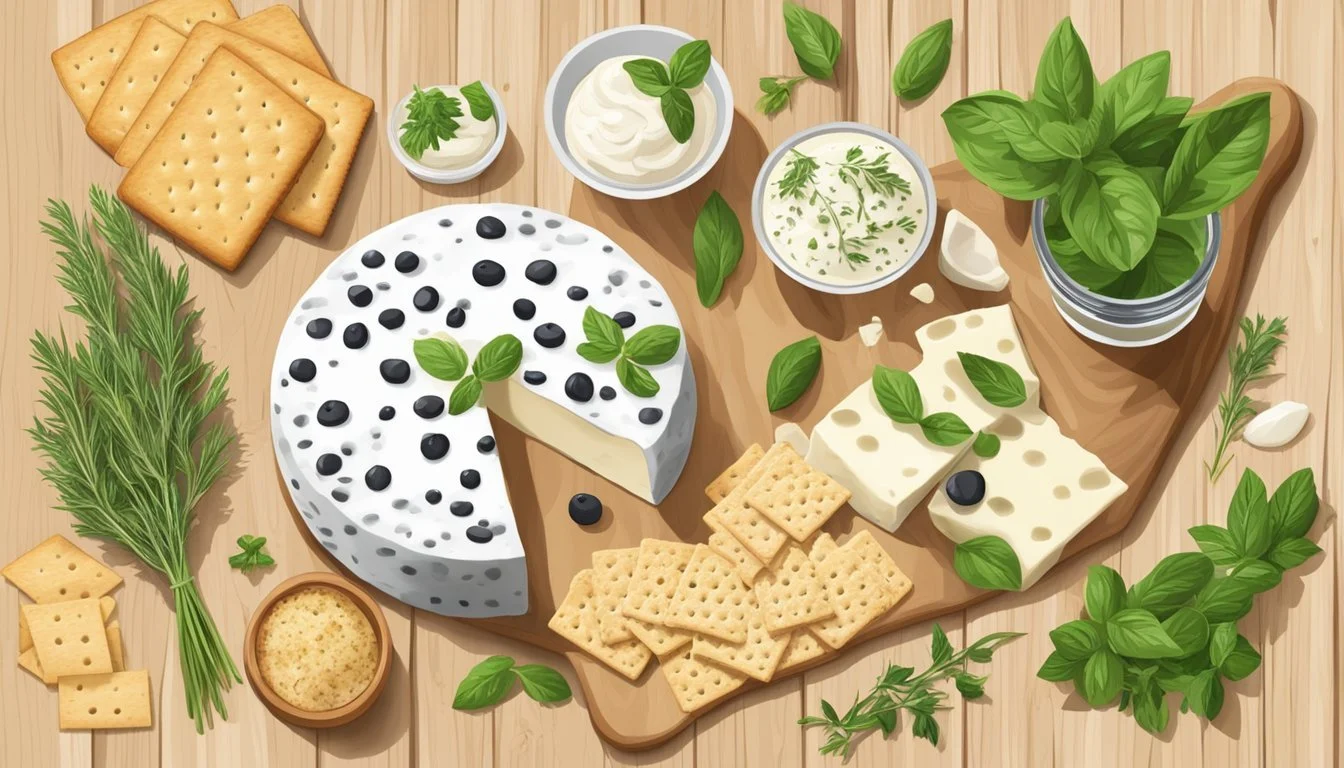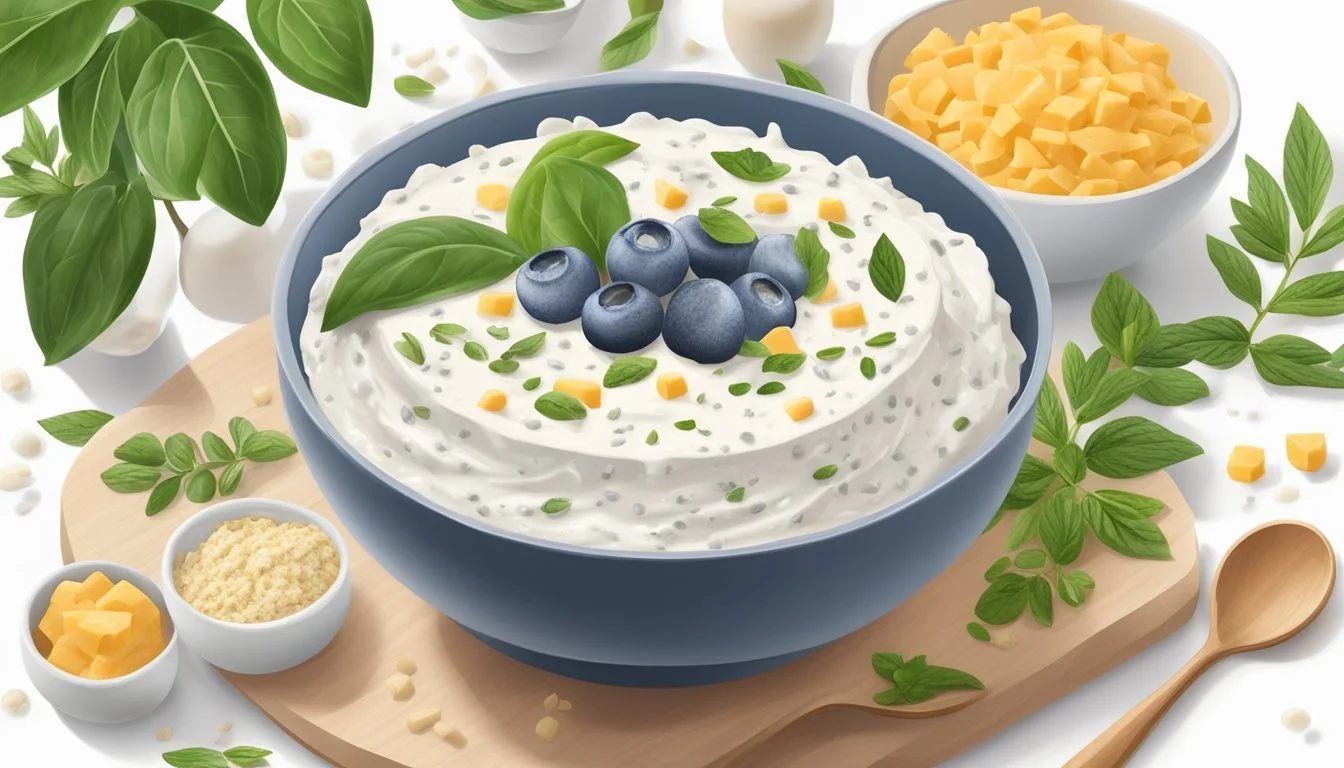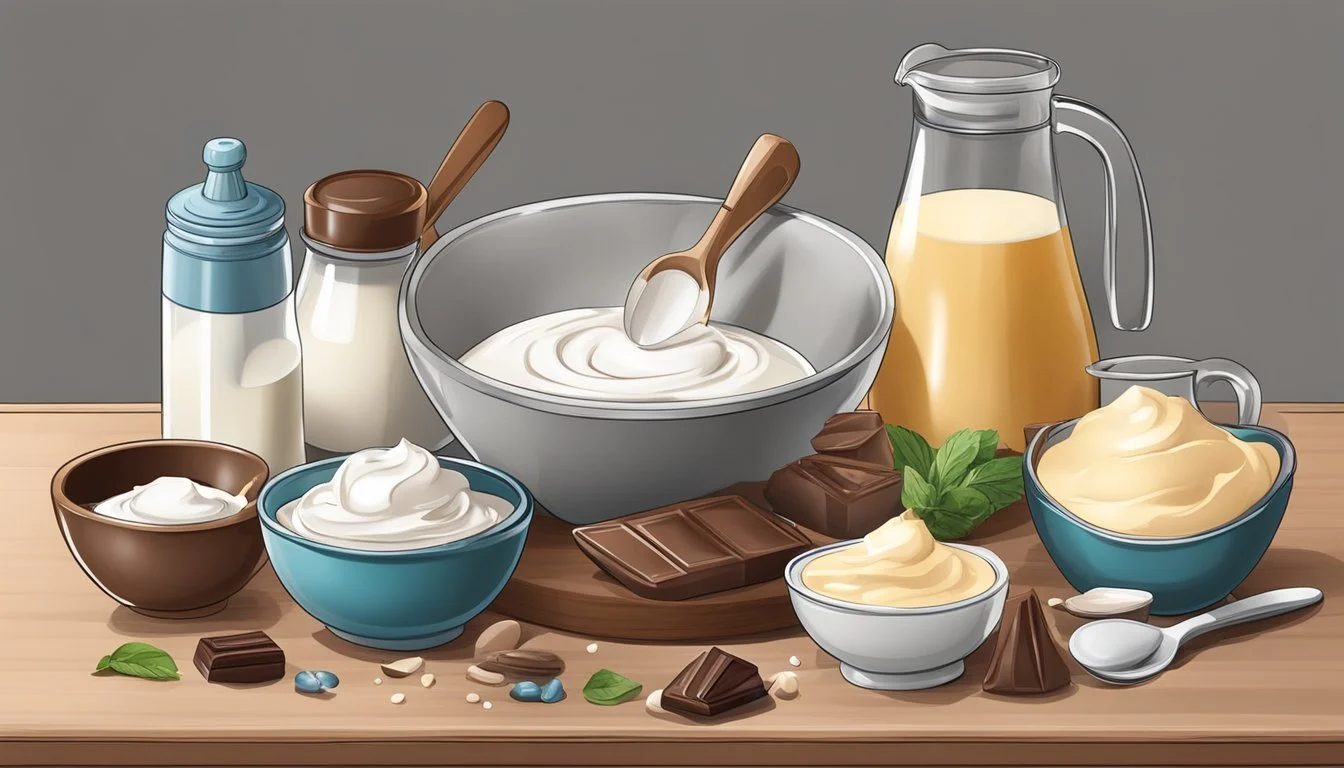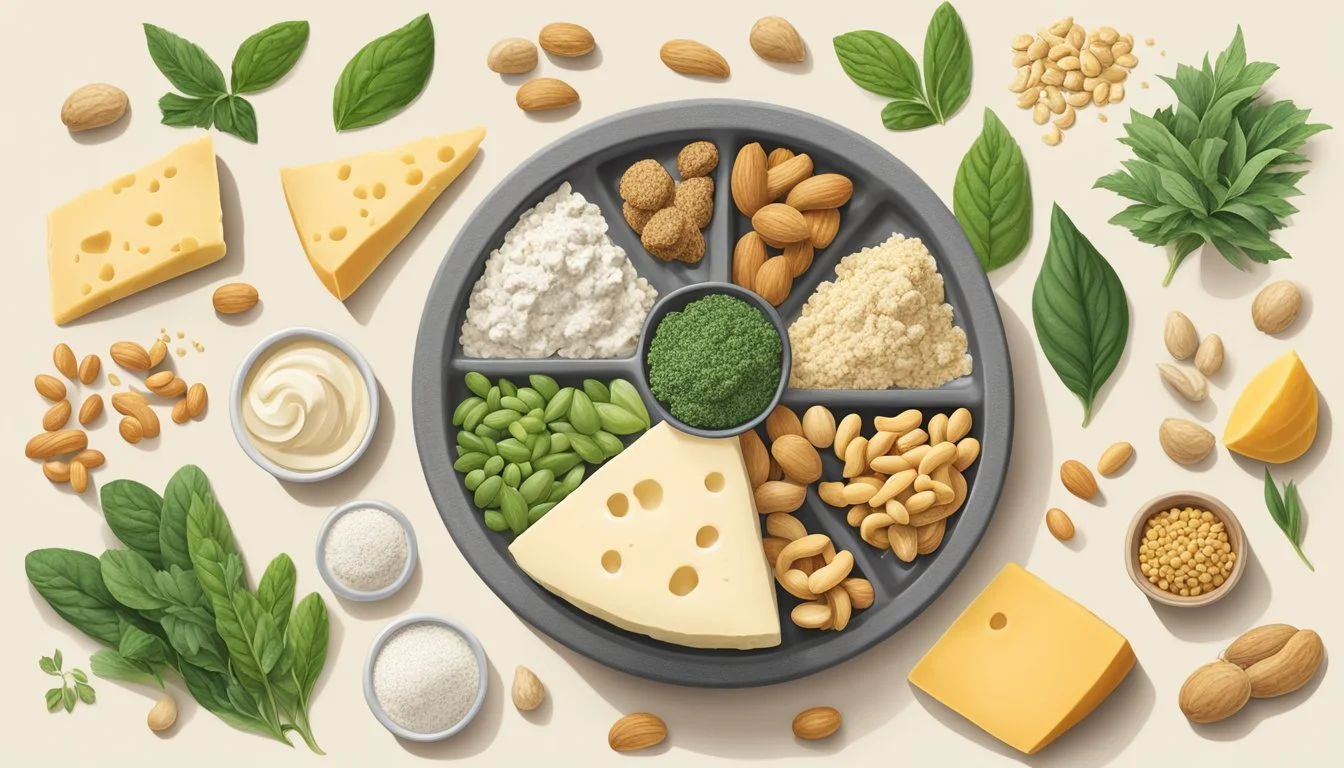Stracciatella Cheese Substitutes
Best Alternatives for Every Recipe
Stracciatella cheese, with its creamy texture and delicate flavor, can elevate various culinary dishes. Whether you're crafting a gourmet pizza or a fresh salad, finding the right substitute when Stracciatella isn't available is essential. Cream cheese stands out as a smooth alternative, capable of blending seamlessly with other ingredients without overpowering them.
For those looking for options beyond cream cheese, ricotta can also be a practical substitute. Made from the whey left over after making mozzarella, ricotta offers a creamy texture and a lightly tangy flavor. Although it lacks the exact consistency of Stracciatella, it ensures a similar richness in your dish.
Bocconcini cheese, another recommended substitute, is a fresh, semi-soft cheese with a creamy flavor. Its soft texture makes it a suitable replacement, providing a similar experience to Stracciatella. Exploring these options ensures that your recipes remain delightful and flavorful, even when the original ingredient is out of reach.
Understanding Stracciatella Cheese
Stracciatella is an Italian cheese known for its distinct creaminess and mild flavor. This cheese, originating from Apulia in southern Italy, is crafted from fresh mozzarella curds. These curds are pulled into fine shreds, giving Stracciatella its unique name, which means "little rag" in Italian.
To create Stracciatella, the mozzarella curds are soaked in hot water to become pliable. They are then stretched into long, thin strands and mixed with fresh cream. This process results in a soft, milky texture that is both rich and smooth.
Stracciatella is often made with cow's milk, though traditional varieties may use buffalo milk. This cheese is highly valued for its texture and flavor, which is mild yet deeply creamy. It is also a key filling for burrata cheese, where it is enclosed within a mozzarella casing.
Stracciatella pairs well with a variety of dishes, adding a layer of creaminess without overwhelming other ingredients. Its soft, rich texture makes it ideal for spreading, blending, or serving as a topping for salads and appetizers.
Table: Key Characteristics of Stracciatella Cheese
Feature Description Origin Apulia, Italy Main Ingredient Mozzarella curds and fresh cream Milk Source Cow's milk (sometimes buffalo milk) Texture Soft, shreds of mozzarella, creamy Flavor Mild, milky, rich
By incorporating Stracciatella into various recipes, chefs can enhance dishes with its unique blend of creaminess and delicate flavor. This Italian cheese shines in both simple and gourmet culinary contexts, offering versatility and a touch of sophistication.
Dairy-Based Alternatives to Stracciatella
Exploring dairy-based substitutes can help retain the rich, creamy texture and mild flavors of Stracciatella cheese. Each alternative offers distinct characteristics that can enhance various dishes while maintaining similar taste profiles.
Mozzarella Cheese Substitutes
Fresh mozzarella serves as a versatile substitute. Its mild flavor and soft, creamy texture are similar to Stracciatella. Options like bocconcini and buffalo mozzarella also work well due to their firm yet creamy consistency. Fresh mozzarella pairs seamlessly with salads, pizzas, and Italian dishes, providing a consistency and taste close to Stracciatella.
Creamy Burrata Substitutes
Burrata closely mimics Stracciatella because it is essentially mozzarella filled with cream. With its buttery flavor and high-fat content, Burrata offers a superb match. Substitute Burrata when a richer, creamier texture is needed, such as in pasta dishes or as a topping for bruschetta. The outer shell of mozzarella housing the creamy interior makes Burrata a near-perfect stand-in.
Ricotta Cheese Varieties
Ricotta brings a mild flavor and smooth, grainy texture as a substitute. For better results, consider fresh ricotta or ricotta di bufala for a creamier and richer consistency. It works well in lasagna, cannoli, and mixed into creamy sauces. Ricotta can mimic the lightness of Stracciatella, making it ideal for various recipes.
Mascarpone and Cream Cheese Options
Mascarpone and cream cheese are noted for their richness and smooth textures. Mascarpone’s high-fat content offers a buttery flavor, similar to Stracciatella, making it suitable for desserts and creamy dishes. Cream cheese, while slightly tangier, provides a dense, creamy consistency that works well in dips, spreads, and cheesecakes. Both options can be blended with fresh cream to mimic Stracciatella’s texture.
Feta as a Stracciatella Alternative
Feta cheese, with its crumbly texture and distinctive salty profile, might seem unconventional. However, creamy feta can provide a tangy contrast to Stracciatella’s mildness. Ideal for salads and Mediterranean dishes, feta brings a unique richness. Blending feta with heavy cream can create a smoother consistency, making it more versatile as a substitute.
Queso Fresco and Fresco Cheese
Queso fresco offers a light, fresh cream flavor with a slightly grainy texture. As a mild, creamy alternative, it is suitable for Mexican dishes like tacos, enchiladas, and salads. Fresco cheese shares similarities with Queso fresco, maintaining a balance between creaminess and a slight tang. Both cheeses provide a different, yet pleasant substitute for Stracciatella.
Plant-Based and Dairy-Free Substitutes
For those seeking alternatives to Stracciatella cheese, there are several plant-based and dairy-free options available. These substitutes cater to various dietary preferences and replicate the creamy texture and versatile use of the original.
Cashew Cheese and Other Nut-Based Alternatives
Cashew cheese is a notable substitute for Stracciatella, offering a similar creamy texture. It's made from soaked and blended cashews, often combined with nutritional yeast, lemon juice, and salt to enhance the flavor. Cashew cheese can be easily spread on bread or mixed into pasta dishes, showcasing its versatility.
Another nut-based alternative includes almond cheese. Made from ground almonds, it delivers a rich texture and slightly nutty flavor, suitable for those who prefer a different taste profile. Both cashew and almond cheeses are dairy-free and vegan, making them ideal for various dietary needs.
Coconut and Almond Cheese Solutions
Coconut-based cheese is another excellent substitute, often used for its unique flavor and creaminess. This cheese is made using coconut milk or cream, which imparts a mild sweetness and rich texture. It works well in both savory and sweet dishes, adding a distinct coconut note that can enhance various recipes.
Almond cheese, on the other hand, utilizes the creaminess of soaked almonds. It can be flavored in numerous ways, such as with herbs and spices, to suit a range of culinary applications. Both almond and coconut cheeses offer suitable substitutes for Stracciatella, especially for those adhering to plant-based or dairy-free diets.
Soy-Based and Other Vegan Substitutes
Soy-based cheeses offer another plant-based option for replacing Stracciatella. These cheeses are often made from tofu or soy milk, presenting a creamy consistency that mimics the original cheese. With added flavors and seasonings, soy-based cheese can be a versatile addition to pasta, soups, and salads.
Other vegan alternatives include products made from pea protein and other plant-derived ingredients. These substitutions are typically fortified with B12 and other vitamins, providing additional nutritional benefits. Soy-based and other vegan cheeses are not only dairy-free but also cater to those looking for more sustainable food choices.
Creative Uses for Stracciatella Substitutes
Stracciatella cheese substitutes can effectively transform a variety of dishes across different courses. From salads and starters to main courses and desserts, these alternatives add a creamy texture and rich flavor to enhance meals.
Salads and Starters
Burrata and ricotta can be excellent choices for salads. For a classic Caprese salad, swap Stracciatella with Burrata for that luscious, creamy texture. Simply combine fresh tomatoes, basil, and a drizzle of olive oil.
Burrata brings a luxurious feel to bread-based starters like bruschetta. Spread it on toasted slices with fresh tomatoes and a sprinkle of sea salt. Ricotta can also be used as a creamy layer for crostini, paired with pesto or honey.
Main Courses and Pasta Dishes
Stracciatella substitutes work well in many pasta dishes. Burrata can be used as a topping for pasta, like in a simple spaghetti with tomato sauce. It can melt wonderfully, bringing a rich creaminess to the dish.
Ricotta makes an excellent filling for stuffed shells and ravioli. It also shines in lasagna, providing a creamy layer that complements meats and vegetables. Prosciutto and burrata pizza offers a gourmet twist, balancing savory flavors with creamy bites.
Desserts and Sweet Treats
Ricotta is particularly versatile for sweet dishes. It can be sweetened and used as a filling for cannoli, adding a smooth texture with a hint of tanginess.
For a simple dessert, use Burrata with fresh fruits like strawberries or peaches. Drizzle with honey or a balsamic reduction for added flavor. These cheese substitutes offer richness that elevates any sweet treat.
Appetizers and Dips
Both Burrata and ricotta perform well in appetizers and dips. Burrata can be the centerpiece of a charcuterie board, surrounded by cured meats, nuts, and fresh fruits.
Ricotta can be whipped with herbs to create a savory dip for vegetables or bread. It can also be mixed with honey and nuts for a sweeter option. These cheese alternatives lend a smooth, creamy texture that enhances various appetizers.
Complementary Ingredients and Pairings
Stracciatella cheese's unique flavor and velvety texture make it a versatile addition to many dishes. Bread, especially when broiled or toasted, pairs wonderfully with stracciatella. Drizzly olive oil and a touch of balsamic vinegar enhance its creamy, indulgent qualities.
Italian cuisine frequently incorporates stracciatella with fresh mozzarella and ricotta cheese, leveraging its buttery flavor and mouthfeel. They find it equally delightful on pizza, mingling with pesto or tomato sauce, providing a balanced, tangy flavor.
For salads, stracciatella blends well with mixed greens. Adding burrata cheese or fresh tomatoes, topped with a light vinaigrette, creates a refreshing yet rich dish. It also complements prosciutto, offering a soft contrast to the cured meat's saltiness.
When pairing with other ingredients, it's beneficial to highlight stracciatella's creaminess and unique flavor. Ingredients like fresh basil, arugula, and figs can add varied textures and tastes, creating a well-rounded culinary experience.
Shopping and Storage Tips
When shopping for Stracciatella cheese, look for it in the specialty cheese section of your grocery store. This cheese is often readily available in stores with a diverse cheese selection or Italian imports.
To ensure freshness, check the expiration date and look for cheese stored in brine or salted water.
Stracciatella cheese comes from Andria, Italy, where it's crafted with high-fat content milk. Due to its creamy texture, it's best handled carefully.
Keep Stracciatella cheese in the coldest section of your refrigerator. It maintains its quality well when stored at low temperatures. Ensure it's properly sealed to prevent exposure to air and moisture.
If the packaging includes brine, keep the cheese submerged to preserve its moisture and flavor. Adding a pinch of sea salt can enhance the brine if needed.
Stracciatella should be used within a week of opening to enjoy its freshest state. Always use a clean utensil to scoop the cheese to avoid contamination.
For easy access, store the cheese in a tightly sealed container. This will help retain its creamy texture and prevent it from drying out.
Health and Nutritional Perspectives
Stracciatella cheese is traditionally made from fresh mozzarella and cream, often derived from cow's milk or water buffalo milk.
Nutritional Content
Stracciatella boasts a rich, creamy taste with a high-fat content. This cheese provides a notable amount of calcium, contributing to bone health and structural support.
Fat and Calories
Due to its creamy nature, Stracciatella contains a high percentage of fat. While it provides valuable energy, those monitoring their fat intake might need to consume it in moderation.
Alternative Options
For those seeking dairy-free substitutes, cashew cheese and nutritional yeast offer creamy and flavorful alternatives.
Cashew Cheese: Made from blended cashews, lemon juice, and nutritional yeast, it mimics the texture and tanginess of traditional cheese while being rich in heart-healthy fats.
Nutritional Yeast: This seasoning offers a cheese-like flavor, is low in calories, and fortified with B-vitamins.
Benefits
Despite its high-fat content, Stracciatella's milky and rich composition offers energy-boosting benefits. Whey, present in this cheese, provides protein and promotes muscle health.
Comparisons
Cheese Type Milk Source Dairy-Free Taste Profile Nutritional Highlight Stracciatella Cow's/Water Buffalo No Creamy, Rich High in calcium Cashew Cheese Cashews Yes Tangy, Creamy Rich in heart-healthy fats Nutritional Yeast - Yes Savory, Cheese-like Fortified with B-vitamins
Selecting cheese substitutes allows for dietary flexibility while satisfying cravings for creamy and savory flavors.









